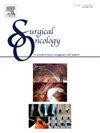Preoperative prediction of severe short-term complications in patients with bladder cancer undergoing radical cystectomy
IF 2.4
4区 医学
Q3 ONCOLOGY
引用次数: 0
Abstract
Background and objective
Radical cystectomy (RC) is associated with a high risk of postoperative complications. The prediction of individual patient risk for severe complications can facilitate preoperative shared decision-making. Patients with elevated risk may be referred to prehabilitation with the aim to mitigate the risk to improve perioperative outcomes. We developed models to predict severe short-term postoperative complications using preoperatively available clinical variables.
Methods
Data from a prospective cohort of 1313 RC patients treated between 1999 and 2021 was used. Preoperative demographic, laboratory, and cancer-related variables were defined as domains to predict severe complications measured by the Comprehensive Complication Index (CCI). Machine-learning models were trained for each postoperative day and predictor domain. The area under the receiver operating characteristic curve (AUROC) was reported as the primary outcome. Clinical utility was examined using Decision Curve Analysis (DCA).
Results
The best performing model had an AUROC of 0.69 (95 % CI 0.63–0.75) for severe complications on postoperative day (POD) 14. Mean AUROCs across POD 1–30 were 0.64 for all variables combined, 0.58 for demographics, 0.56 for laboratory values, and 0.53 for cancer-related factors. Model calibration and stability improved from POD 10 onwards. Decision curve analysis indicated the highest net benefit from models incorporating all predictors, with demographic variables contributing most among individual domains.
Conclusions and clinical implications
Limited clinical utility of the trained models was observed. The benefit for preoperative clinical decision-making is unclear. Clinical utility may improve by the inclusion of variables related to function in future models (e.g., frailty).
膀胱癌根治性膀胱切除术患者严重短期并发症的术前预测
背景和目的根治性膀胱切除术(RC)与术后并发症的高风险相关。个体患者严重并发症风险的预测可以促进术前共同决策。高危患者可进行康复治疗,以降低风险,改善围手术期预后。我们利用术前可用的临床变量建立了预测严重短期术后并发症的模型。方法数据来自1999年至2021年期间接受治疗的1313例RC患者的前瞻性队列。术前人口统计学、实验室和癌症相关变量被定义为通过综合并发症指数(CCI)预测严重并发症的域。机器学习模型在术后每一天和预测域进行训练。受试者工作特征曲线下面积(AUROC)作为主要终点。采用决策曲线分析(DCA)检验临床效用。结果最佳模型术后14天严重并发症AUROC为0.69 (95% CI 0.63-0.75)。POD 1-30的平均auroc为所有变量组合的0.64,人口统计学为0.58,实验室值为0.56,癌症相关因素为0.53。从POD 10开始,模型校准和稳定性得到改善。决策曲线分析表明,结合所有预测因子的模型净效益最高,人口变量在个别领域的贡献最大。结论和临床意义观察到训练模型的临床应用有限。术前临床决策的益处尚不清楚。通过在未来的模型中纳入与功能相关的变量(例如,虚弱),临床效用可能会得到改善。
本文章由计算机程序翻译,如有差异,请以英文原文为准。
求助全文
约1分钟内获得全文
求助全文
来源期刊

Surgical Oncology-Oxford
医学-外科
CiteScore
4.50
自引率
0.00%
发文量
169
审稿时长
38 days
期刊介绍:
Surgical Oncology is a peer reviewed journal publishing review articles that contribute to the advancement of knowledge in surgical oncology and related fields of interest. Articles represent a spectrum of current technology in oncology research as well as those concerning clinical trials, surgical technique, methods of investigation and patient evaluation. Surgical Oncology publishes comprehensive Reviews that examine individual topics in considerable detail, in addition to editorials and commentaries which focus on selected papers. The journal also publishes special issues which explore topics of interest to surgical oncologists in great detail - outlining recent advancements and providing readers with the most up to date information.
 求助内容:
求助内容: 应助结果提醒方式:
应助结果提醒方式:


